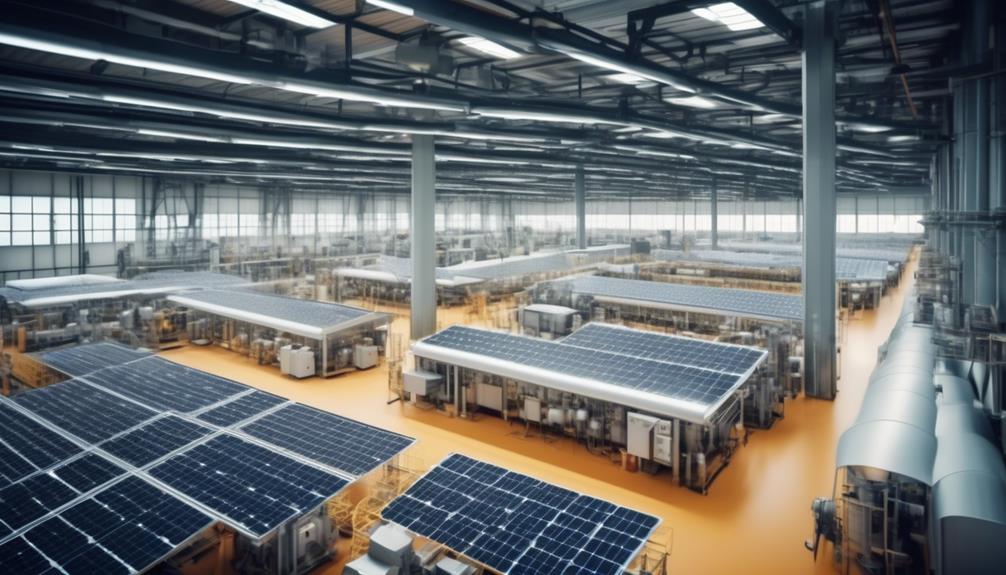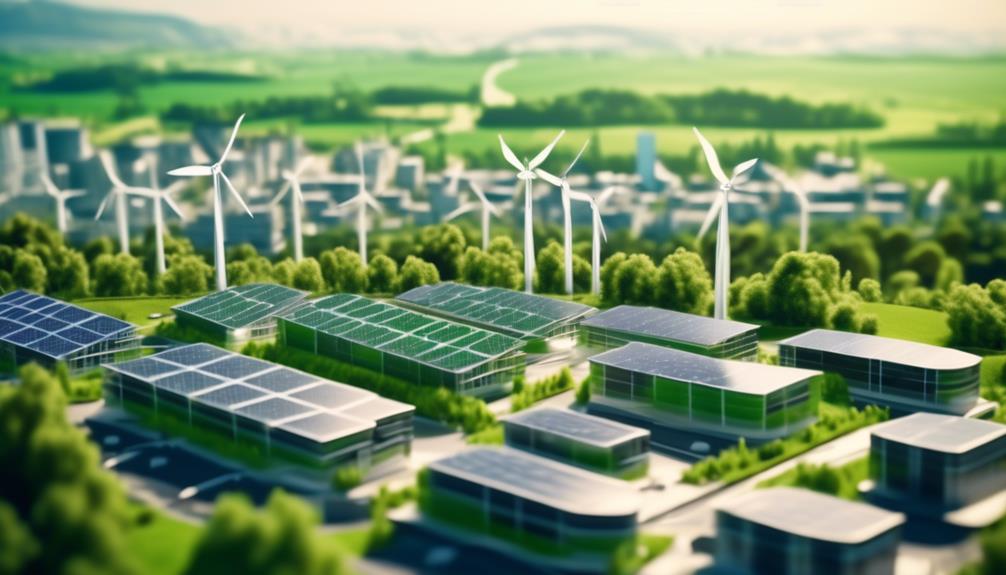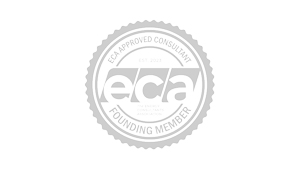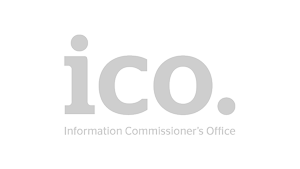Navigating the complex landscape of renewable energy options is a common challenge for SMEs committed to sustainability. You’re likely seeking cost-effective, environmentally friendly solutions that match your energy consumption patterns and business needs.
The journey towards a greener future is fraught with considerations – from deciphering the green credentials of energy suppliers to understanding the impact of consumption patterns on your carbon footprint.
Our insights, drawn from extensive experience in renewable energy, are tailored to guide SMEs through the maze of green energy options. We understand the nuances of balancing environmental responsibilities with business pragmatism.
By delving into energy needs, evaluating financial incentives, and promoting energy-efficient practices, we’ll help you make a choice that not only benefits the planet but also enhances your business reputation and bottom line.
As we unpack these considerations, rest assured, the path to selecting the best green energy plan for your SME will become clearer, encouraging you to read on for a comprehensive understanding that aligns with your sustainability goals.
Key Takeaways
- Conducting an energy audit is crucial for SMEs to assess energy usage and identify areas of inefficiency.
- Exploring and implementing renewable energy options, such as solar PV panels and wind power, can help SMEs reduce their reliance on non-renewable sources.
- When comparing and selecting green energy suppliers, it is important to consider factors like reliability, pricing options, and their commitment to renewable energy.
- SMEs should explore financial incentives and funding options to offset initial costs and encourage the adoption of green energy practices.
Evaluating Energy Consumption and Needs
When it comes to developing a green energy plan for SMEs, it is crucial to begin by thoroughly evaluating their energy consumption and needs. This evaluation process typically involves conducting an energy audit and implementing effective energy management practices.
An energy audit is a comprehensive assessment of an SME’s energy usage, identifying areas of inefficiency and opportunities for improvement. This involves collecting data on energy consumption and analysing it to determine patterns and trends. By understanding how energy is being used within the organisation, SMEs can identify areas where energy is being wasted and develop strategies to reduce consumption.
Energy management plays a vital role in optimising energy usage and minimising waste. It involves implementing systems and practices that allow SMEs to monitor, control, and optimise their energy consumption. This can include the use of smart meters, energy-efficient equipment, and employee education programmes.
Identifying Suitable Renewable Energy Options
After thoroughly evaluating an SME’s energy consumption and needs, the next crucial step is to identify suitable renewable energy options that align with the organisation’s sustainability goals and contribute to reduced reliance on fossil fuels. Here are five key considerations in identifying these options:
- Consider green tariffs: Evaluate options from suppliers to ensure your business’s electricity usage is matched with renewable energy, contributing to reduced reliance on fossil fuels.
- Explore renewable energy technologies: Assess options such as solar PV panels, wind power, biomass systems, and others to determine the best fit for your SME’s energy needs and sustainability goals.
- Understand the costs: Determine the financial implications of renewable energy technology installation, considering factors like equipment costs, potential savings, and available government incentives.
- Monitor supplier greenness: Compare energy suppliers’ fuel mix, as well as their support for renewable energy and carbon offsetting, to make an informed decision on choosing a greener option.
- Embrace emerging technologies: Stay informed about future renewable energy options, such as wave generation and artificial photosynthesis, to potentially integrate innovative solutions into your SME’s energy plan.
In addition to these considerations, assessing the carbon footprint of your SME’s operations and exploring energy storage solutions are also essential.
Comparing and Selecting Green Energy Suppliers
To effectively compare and select green energy suppliers for your SME, it is essential to thoroughly assess their commitment to renewable energy and their overall fuel mix composition.
Start by evaluating supplier reliability, as it is crucial to choose a supplier with a proven track record of delivering consistent and reliable green energy. Look for suppliers that have experience in the renewable energy sector and have a strong reputation for reliability.
Next, compare pricing options to ensure that you are getting the best value for your money. While green energy may have a slightly higher initial cost compared to traditional energy sources, it is important to consider the long-term benefits and potential cost savings. Some suppliers may offer fixed-rate contracts, which can provide stability and protection against price fluctuations in the energy market.
Additionally, consider the supplier’s commitment to renewable energy. Look for suppliers that source a significant portion of their energy from renewable sources such as wind, solar, biomass, or hydroelectric power. Assess their fuel mix composition to determine the percentage of renewable energy in their overall energy supply.
Considering Financial Incentives and Funding Options
Financial incentives and funding options play a crucial role in supporting SMEs in their transition towards green energy solutions. SMEs can explore various funding options, such as grants, loans, and government schemes, to help offset the initial costs of renewable energy installations.
Additionally, financial incentives, such as tax credits and feed-in tariffs, can provide ongoing financial benefits for SMEs that generate renewable energy.
Funding Options for SMEs
Small and medium-sized enterprises (SMEs) can explore a range of funding options to support their transition towards green energy, considering financial incentives and funding options available from various organisations. Here are some funding options that SMEs can consider:
- Funding assistance and support resources available from Ofgem, Energy Saving Trust, The Federation of Small Businesses, and Citizens Advice.
- Articles and guides on green energy options, sustainability tools, and managing energy costs for small businesses.
- Information on green business energy tariffs, suppliers, and understanding the variation in supplier greenness for SMEs.
- Renewable energy options, considerations, costs, and future technologies for small business installations.
- Benefits of renewable energy for small businesses, including stable energy costs, reduced emissions, and potential income generation.
Financial Incentives Available
One of the key factors to consider when exploring the transition towards green energy for SMEs is the availability of financial incentives and funding options.
SMEs can benefit from a range of grants and loans that are specifically designed to support green energy initiatives. These financial support options can help SMEs offset the initial costs associated with adopting renewable energy technologies or making energy efficiency upgrades.
Additionally, tax credits for green energy initiatives are available, providing further financial incentives for SMEs to invest in sustainable energy solutions. These tax credits can help reduce the overall cost of implementing green energy projects, making them more affordable for SMEs.
Implementing Energy-Efficient Practices
To enhance sustainability and reduce energy consumption, businesses can implement a range of energy-efficient practices. By evaluating energy audits and implementing energy saving measures, small and medium-sized enterprises (SMEs) can play a crucial role in reducing their carbon footprint and contributing to a greener future. Here are five energy-efficient practices that SMEs can adopt:
- Upgrade lighting systems: Switching to energy-efficient LED lights can significantly reduce energy consumption. LED lights are not only more durable and longer-lasting but also consume less energy compared to traditional lighting options.
- Improve insulation: Properly insulating buildings can help reduce heat loss in winter and heat gain in summer. This can be achieved by installing insulation in walls, roofs, and windows, which will lead to lower energy consumption and improved comfort for employees.
- Optimise heating and cooling systems: Regular maintenance and upgrades of heating and cooling systems can lead to significant energy savings. Installing programmable thermostats, using energy-efficient HVAC equipment, and implementing temperature control strategies can help reduce energy waste.
- Adopt smart energy management systems: Implementing smart energy management systems can provide real-time data on energy usage, allowing businesses to identify and address energy wastage. These systems can automate energy consumption patterns and optimise energy usage based on demand.
- Encourage employee engagement: Raising awareness among employees about energy conservation practices and encouraging their active participation can lead to significant energy savings. Simple actions like turning off lights when not in use, using natural light whenever possible, and properly shutting down equipment can make a big difference.
Monitoring and Optimising Green Energy Usage
Monitoring and optimising green energy usage is crucial for SMEs to achieve sustainable energy goals.
By tracking energy consumption, businesses can identify areas of inefficiency and implement strategies to improve energy efficiency.
This can include measures such as upgrading equipment, implementing energy management systems, and promoting employee awareness and participation in energy-saving practices.
Energy Consumption Tracking
Tracking and optimising energy consumption is a crucial step for small and medium-sized enterprises (SMEs) to achieve their sustainability goals and reduce costs. By implementing energy consumption tracking tools and conducting regular energy consumption analysis, SMEs can identify areas where energy usage can be reduced and efficiency can be improved. This leads to lower carbon emissions and energy costs, contributing to the achievement of net-zero goals and overall sustainability targets.
To effectively track and optimise energy consumption, SMEs can consider implementing energy management solutions that provide real-time data on energy usage, identify energy wastage, and suggest energy-saving measures. These solutions can help SMEs make data-driven decisions and implement innovative solutions to reduce their environmental impact and improve their bottom line.
Efficiency Improvement Strategies
By implementing efficient energy management solutions and utilising data-driven strategies, SMEs can optimise their green energy usage and achieve their sustainability goals.
One key strategy is to conduct energy consumption analysis to identify areas for reducing energy consumption and improving efficiency. Tools such as OnEfficiency can assist SMEs in this process by providing insights and recommendations based on real-time data.
Another strategy is to adopt energy-saving technologies, such as OnGen Expert, which can assess the feasibility of onsite renewable energy generation and battery storage.
Additionally, SMEs can use platforms like OnSupply to find the cheapest green energy tariffs and switch to zero-carbon energy suppliers.


















